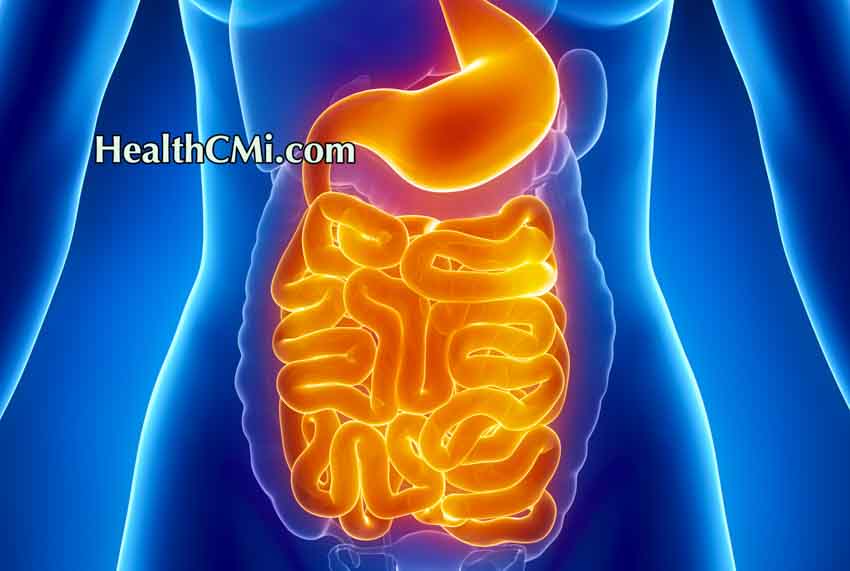
Acupuncture is effective for relieving symptoms caused by intestinal obstructions. A recent study compared the efficacy of treating intestinal obstructions with routine biomedical care and acupuncture. The latter yielded superior patient outcomes. [1]
Efficacy rate in this study was based on a four-level symptom scoring system:
- Recovered: Symptoms eliminated, abdominal imaging showed no abnormality
- Significantly effective: Abdominal swelling relieved, pain and vomiting eliminated, ability to pas gas and have a bowel movement restored, abdominal imaging showed no abnormality
- Effective: Abdominal swelling and pain relieved, vomiting eliminated, ability to pas gas and have a bowel movement restored, abdominal imaging showed no abnormality
- Ineffective: symptoms persisted or became more severe
Among the 40 cases in the acupuncture group, 16 recovered, 14 were significantly effective, seven were effective, and three were ineffective. The total efficacy rate was 92.75%, higher than that of the control group (75.00%). The acupuncture group also had a shorter recovery rate in terms of the above-mentioned symptoms. In addition, researchers believe that using acupuncture can circumvent side effects caused by oral medicine.
The study included a sample of 80 intestinal obstruction patients admitted into the Affiliated Hospital to Jiangxi University of Traditional Chinese Medicine from 2018 to 2020. All patients were the qi and blood deficiency type. The patients were randomized into a routine care group and an acupuncture group, with 40 cases in each group. In the routine care group, 19 patients were females and 21 were males. The age range was 61 to 79 years, the mean age was 68.81 ±4.32 years, and the BMI range was 18.4 to 31.6 kg/cm2. The mean BMI was 23.65 ±1.44 kg.
In the acupuncture group, 20 patients were females and 20 were males. The age range was 62 to 77 years, the mean age was 68.93 ±4.15 years, and the BMI range was 18.5 to 31.4 kg/cm2. The mean BMI was 23.61 ±1.47 kg/cm2.
Prior to treatment, physical exams revealed signs of swelling or tightness in the abdomen area. Cramping abdominal pain, other pain, vomiting, and inability to have a bowel movement or pass gas could be observed. Imaging showed a dilated and pneumatized intestinal canal and elevated fluid levels within. Those who had received radiotherapy or surgery, or had a history of malignant intestinal obstruction, were excluded from the research.
For the routine care group, fasting, acid suppression therapy, gastrointestinal decompression, correction of disorders in the fluid and electrolyte balance, and nutritional support were administered. Healthy dietary habits were recommended, including eating regularly and avoiding cold food, and hot and spicy food. Regular daily exercises were highly recommended.
For the acupuncture group, a prone position was taken. Needles were inserted using a tonifying method at the following points:
- BL20 (Pishu)
- BL21 (Weishu)
- ST36 (Zusanli)
- CV6 (Qihai)
- CV4 (Guanyuan)
- CV13 (Shangwan)
- CV12 (Zhongwan)
- CV10 (Xiawan)
- ST25 (Tianshu)
- SP3 (Taibai)
- SP4 (Gongsun)
- Extra (Ashi)
Needles were retained for 30 minutes after obtaining a deqi sensation. Needle ends were connected to moxa to conduct moxibustion. The moxa were ignited and the moxibustion procedure lasted for five minutes. Fourteen days of treatment were performed. The results included above show that acupuncture with moxa promotes symptom relief for patients experiencing intestinal obstructions.
Reference:
[1] Fu Caiqin, Chen Weirong, Li Longhua, Clinical Observation on Treating Intestinal Obstruction (Qi and blood deficiencyy type) with Jian Pi Yi Qi Acupuncture, Guangming Journal of Chinese Medicine, January 2022. Vol 37, 1.


